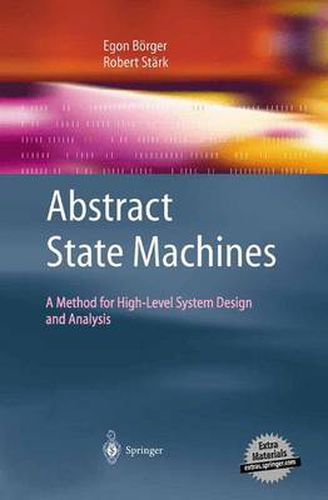Readings Newsletter
Become a Readings Member to make your shopping experience even easier.
Sign in or sign up for free!
You’re not far away from qualifying for FREE standard shipping within Australia
You’ve qualified for FREE standard shipping within Australia
The cart is loading…






This title is printed to order. This book may have been self-published. If so, we cannot guarantee the quality of the content. In the main most books will have gone through the editing process however some may not. We therefore suggest that you be aware of this before ordering this book. If in doubt check either the author or publisher’s details as we are unable to accept any returns unless they are faulty. Please contact us if you have any questions.
The systems engineering method proposed in this book, which is based on Abstract State Machines (ASMs), guides the development of software and embedded hardware-software systems seamlessly from requirements capture to actual implementation and documentation. The method bridges the gap between the human understanding and formulation of real-world problems and the deployment of their algorithmic solutions by code-executing machines. Within a single conceptual framework it covers design, verification by reasoning techniques, and validation by simulation and testing. ASMs improve current industrial practice by using accurate high-level modeling and by linking the descriptions at the successive stages of system development in an organic and efficiently maintainable chain of rigorous and coherent system models at stepwise-refined abstraction levels. In several industrial projects the ASM method has proven its superiority compared to the popular UML methodology when designing complex parallel or dynamic systems. This book combines the features of a textbook and a handbook: the reader will find detailed explanations, proofs, and exercises as well as numerous examples and real-world case studies. Researchers will find here the most comprehensive description of ASMs available today and professionals will use it as a modeling handbook for the working software engineer.
As a textbook it supports self-study or it can form the basis of a lecture course. The book is complemented by a CD containing the whole book text, additional course material, solutions to exercises, and additional examples. Even more information can be found on the related website maintained by the authors: http://www. di. unipi. it/AsmBook/
$9.00 standard shipping within Australia
FREE standard shipping within Australia for orders over $100.00
Express & International shipping calculated at checkout
This title is printed to order. This book may have been self-published. If so, we cannot guarantee the quality of the content. In the main most books will have gone through the editing process however some may not. We therefore suggest that you be aware of this before ordering this book. If in doubt check either the author or publisher’s details as we are unable to accept any returns unless they are faulty. Please contact us if you have any questions.
The systems engineering method proposed in this book, which is based on Abstract State Machines (ASMs), guides the development of software and embedded hardware-software systems seamlessly from requirements capture to actual implementation and documentation. The method bridges the gap between the human understanding and formulation of real-world problems and the deployment of their algorithmic solutions by code-executing machines. Within a single conceptual framework it covers design, verification by reasoning techniques, and validation by simulation and testing. ASMs improve current industrial practice by using accurate high-level modeling and by linking the descriptions at the successive stages of system development in an organic and efficiently maintainable chain of rigorous and coherent system models at stepwise-refined abstraction levels. In several industrial projects the ASM method has proven its superiority compared to the popular UML methodology when designing complex parallel or dynamic systems. This book combines the features of a textbook and a handbook: the reader will find detailed explanations, proofs, and exercises as well as numerous examples and real-world case studies. Researchers will find here the most comprehensive description of ASMs available today and professionals will use it as a modeling handbook for the working software engineer.
As a textbook it supports self-study or it can form the basis of a lecture course. The book is complemented by a CD containing the whole book text, additional course material, solutions to exercises, and additional examples. Even more information can be found on the related website maintained by the authors: http://www. di. unipi. it/AsmBook/